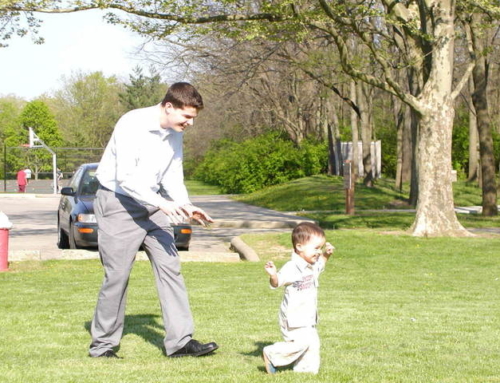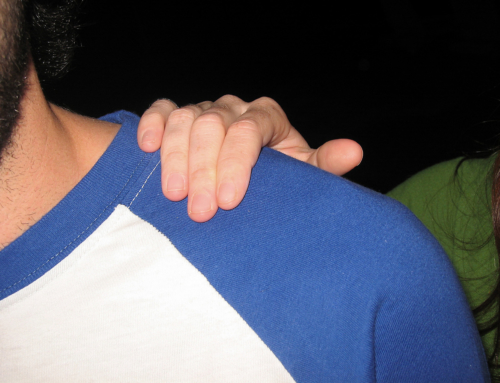it all!
There I was, sitting at a restaurant, when I heard the lady at the table next to me lace her order with the waiter. “I want … I want … I want …” Along with her never saying “please’ or “thank you,” this started me thinking about our desires. Not just fanciful musings, but unlimited, immediate, strong desires. Certainly we have many choices in our lives, which also leads to the modern opportunity to fulfill desires quickly. Electronics surround us, giving immediate access to fulfilling our desires. (I’m just as guilty as anyone else of floating down the Amazon shipping stream when I want something!) The multi-media world is often in our palms and can trigger new desires for things, places, events, or foods we have never considered before. Parents in stores are nearly as pushy, greedy, impulsive, and demanding as their young children. The desire to possess is pushing near-constant “sales,” extravaganzas of artificial discounts with initially raised price points, and pre-releases of new models sooner and more vibrantly. Soon “Black Halloween” will begin the Christmas shopping season. (Even Houston’s mayor tweeted about the this very thing.)
It seems all this is targeting our desires. So what do we know about desire?
How are desires born and sustained?
Are they directed or controllable?
What benefit does desire offer us?
Desire is a feeling – one that motivates and propels us to action. Ask any advertising agent, they know this. Their goal is to create a strong feeling. Now! There’s more! Only 2 days left! Low Stock – Only 2 remaining in your size/color! Order early! New, Improved, Better! Even our senses can prompt desires – what we hear (the fizz of a soda opening), what we smell (those fries or popcorn), what we see (a store logo, ad for an item, someone with something wonderful), and the environment (restaurants, casinos, grocery stores) can prompt a desire almost immediately. We are often unaware of this connection between a situation and the pang of desire, but it is there and pushes us, demanding action.
We can have wild desires; we typically keep those in our imagination. The desires we act upon usually have very strong feelings attached to them. There can be a conscious pursuit – “I want this and here’s my plan to get it.” When our desire conflicts with another goal or philosophy we use strategies such as justification and rationalization to help ease our way into action. “I have worked hard.” “Just one won’t matter.” “No one will know.” “I am worth it.” “The money is there.” What hasn’t “broken” a “diet” with “just one” or “just today” ?
The response to desire can be impulsive, unconscious, or even habitual. When we are impulsive, we act without considering the options and results. In the case of habits, the connection between desire and action occurred in the past and is now ingrained. We do not stop to think, we just seem to “do it.” Even our daily routines were originally created in a desire to “get it done” or fulfill another need (hygiene, hunger, salary, dominance).
So what maintains a habit? It is the reward at the end of the action. This can be as simple as “rewarding” yourself with screen time, shopping, or meeting a friend. Rewards can be a feeling of happiness, satisfaction, delight in reaching a goal, or physical feelings of restfulness, alertness, or fullness. Even the feeling of pride is a reward. Our modern rewards are often tangible – items, “likes” on a post or website page, places, events, name in press, food. The amount of items in the in the stores, new and frequent releases, upgrades, and innovations are all testaments to our many desires and the connection between desire and action. Even more so, they capitalize upon an even prompt an apparently inability to resist, defer, redirect, or ignore our wants.
Back to “I want…” Isn’t that the hallmark of desire and a habit to fulfill our desires? Now, wanting something often directly leads to having it. There is no time in the year that this is more evident than any “holiday” season. We need to put time, space, and reason in between these two phases. We must separate the feeling of desire and pursuit of the immediate reward. For our own sake and that of our children, it is time to start breaking the cycle of desire and immediate fulfillment/action.
Rather than focusing upon the desire, we need to analyze the reward, goal, and end-game in order to reduce immediately acting and responding to desires and external pressures. What is so attractive about the desired goal? What will its lifespan be for me? Do I already have an acceptable or similar substitute? Is there something lacking in the one I already have? What will we give up/away to have the item? How long will we have to work for the item or pay for it? Is it worth the investment of time, energy, money, ourselves, our credit? Will I want to replace it with the “new” or “next” model?
Restructuring our thoughts about the desire and how we can fulfill it is easily done. The difficult part is that the evaluation must be an intentional step and choice. We have to stop and think.
The earliest and easiest way to break the connection between desire and immediate fulfillment is to offer a different reward. Our salaries are a great example of deferred desire. We work and wait for the reward. Setting up daily chores for children provides them with the same experience. By having unpaid responsibilities, they have the reward of internal feelings of accomplishment and helping out the family. Chores allow the child to develop skills, many needed for a lifetime of independence (e.g., cleaning, laundry, organization, cooking). Chores allow us the reward of “doing for” others and ourselves rather than “asking from” others. Connecting responsibilities to tangible rewards defers the prize, yet the child has the essential element of choice. The child learns to plan and wait.
Intentionally selecting a reward requires our logical brain to override the emotions of desire. By waiting to accumulate stickers, points, or money, the immediate pressures of advertising, peers, and competition can wane. The child may no longer “have to have” the item. It is almost like a virtual shopping cart placed on “hold.” While gathering up the “price,” the quality and usefulness and even enjoyment of the item can be evaluated. Children clearly defer or reject their desires when it is their hard work and money which have to be used to gain a quick fix for a desire. Junk food, toys, latest fads are not as desirable if they require personally earned funds.
Stopping to think is a way to break the connection between desire and fulfillment. This reduces impulsive pursuits to fill our “wants.” In the current financial and economic situation we ow our children nothing less. We must let them learn how to plan, save, budget, and work for something. We must let them experience the value of doing the work themselves rather than paying someone to do something. They must learn the benefit of working to gain what they want. We all must be more conscious of stopping and thinking about what is truly worth our efforts and resources.
What do I want?
I relish seeing parents defer, curb, and permit/require children to fulfill their immediate desires and flights of fancy.
I love hearing about sticker charts, allowance, and daily responsibilities for self-care.
I know that chores help children truly participate in sustaining the household.
I want fewer arguments and more pride in one’s efforts in families.
I want to see the dominance of a sense of charity and helping others.
I want children to be ready to face adulthood in a vibrant, independent way.
Begin now!
-
Provide children with gift spending limits and list ways in which the points/money can be earned.
- Start a program of daily and weekly responsibilities.
- Take stock of possessions. Donate 2 for every present received. Donate 1 for each newly purchased item – always.
- Create gift baskets to surprise neighbors, friends, family “helper,” mowers, cleaners, mail carries, all those whose services we expect, demands, need, and rarely, if ever, take the time to say a true “Thank You.”
- Taking care of themselves and others will help children want to be independent, relish their own skills, break the connection between desire and immediate fulfillment, create strong financial responsibilities, and develop true, two-way relationships.
I want to see it, yes I do.
I want them to feel it, don’t you?
I want you to act – this is the day.
Start this trend, right away.
You can start it in the car.
Look in the mirror, there they are.
Be the first one on your block.
Go ahead, walk the talk.
Let your children go without.
Do they need it? Let them doubt.
Relish restraint, make it so.
Ready parents? Now Go! Go! Go?
Dr. Elizabeth Dybell






